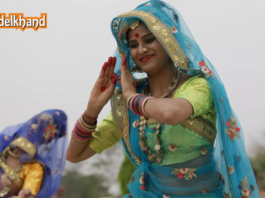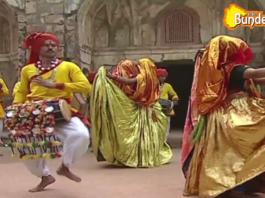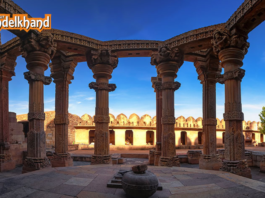Introduction: A Land Where Faith Walks With You
I’ve traveled across India — from the ghats of Varanasi to the monasteries of Ladakh — but nowhere have I felt spirituality so deeply embedded in daily life as I have in Bundelkhand. This region isn’t just culturally rich — it’s spiritually alive.
In Bundelkhand, temples aren’t just places of worship. They’re part of every village’s heartbeat, folk songs carry devotion, and rituals are woven into the everyday rhythm of life. It’s a land where faith isn’t taught — it’s lived.
Let me walk you through what makes Bundelkhand spiritually unique, through my eyes and footsteps.
1. Temples That Whisper Ancient Stories
From hilltop shrines to riverbank sanctuaries, Bundelkhand is filled with temples that are alive with energy and folklore.
Must-Experience Spiritual Sites:
- Neelkanth Mahadev Temple, Kalinjar Fort (Banda) – A powerful Shiva temple carved inside the fort’s rocky walls, where spirituality meets ancient warfare history.
- Kamtanath Temple (Chitrakoot) – The focal point of the 84-kosi parikrama, a sacred journey said to be taken by Lord Ram.
- Deogarh Temples (Lalitpur) – Home to both Gupta-era Vishnu temples and ancient Jain cave shrines overlooking the Betwa River.
2. Bhakti in Every Song: Spiritual Folk Music of Bundelkhand
Bundeli folk music is soaked in devotion. From morning bhajans echoing in temples to Alha-Khand songs praising warrior martyrs, every melody in Bundelkhand connects to something higher.
During Sawan, it’s common to hear women singing Kajri and Jhoola songs while swinging under mango trees, invoking Lord Krishna and Shiva. Even wedding songs here are filled with spiritual metaphors.
And nothing compares to hearing a Kabir bhajan sung by a local fakir under a neem tree at dusk — that’s spirituality in its purest form.
3. Rituals That Keep the Past Alive
What amazes me most about Bundelkhand is how rituals are not performances — they’re a way of life. People don’t just “celebrate” festivals here, they immerse themselves in them.
- Deepdaan in Chitrakoot during Kartik Purnima lights up the Mandakini river like a divine painting.
- Gurupurnima in ashrams and gurukuls is still celebrated the way it was centuries ago — with prayer, offering, and storytelling.
- Halchal, Teej, and Akshaya Tritiya carry local spiritual significance that blends Hindu beliefs with folk traditions.
These rituals are living cultural documents, passed on not through books, but through lived faith.
4. Tribal Spirituality: Sacred Groves & Living Nature Worship
In remote pockets of Tikamgarh, Panna, and Chhatarpur, tribal communities practice a deeply rooted, nature-based spirituality. They worship trees, rivers, mountains, and ancestral spirits with as much reverence as deities.
I once visited a tribal village where a 300-year-old Banyan tree was considered the village deity. Every decision, from marriages to harvests, was taken with blessings from that tree.
This animistic spiritual worldview, fused with mainstream Hindu beliefs, makes Bundelkhand a spiritual mosaic like no other.
5. Pilgrimage With a Purpose: Walking Devotion
Bundelkhand is a land of moving faith — quite literally.
- The Kamtanath Parikrama in Chitrakoot draws thousands of barefoot pilgrims walking 5–8 days.
- Ekadashi Vrat Kathas are recited across villages with stories that strengthen community ties.
- Alha recitals, while heroic in nature, are spiritual in tone — they teach dharma (duty), satya (truth), and bhakti (devotion).
Here, walking, singing, and sharing food become acts of devotion — not just rituals.
Final Thoughts: The Soul of Bundelkhand Is Still Awake
In a rapidly modernizing India, Bundelkhand still breathes with ancient soul. It is not just a place you visit, it is a culture you feel with every sense — from temple bells at dawn to devotional songs at dusk.
As someone who has experienced its warmth, grace, and living traditions, I invite you to go beyond sightseeing — and walk the sacred soil of Bundelkhand.




